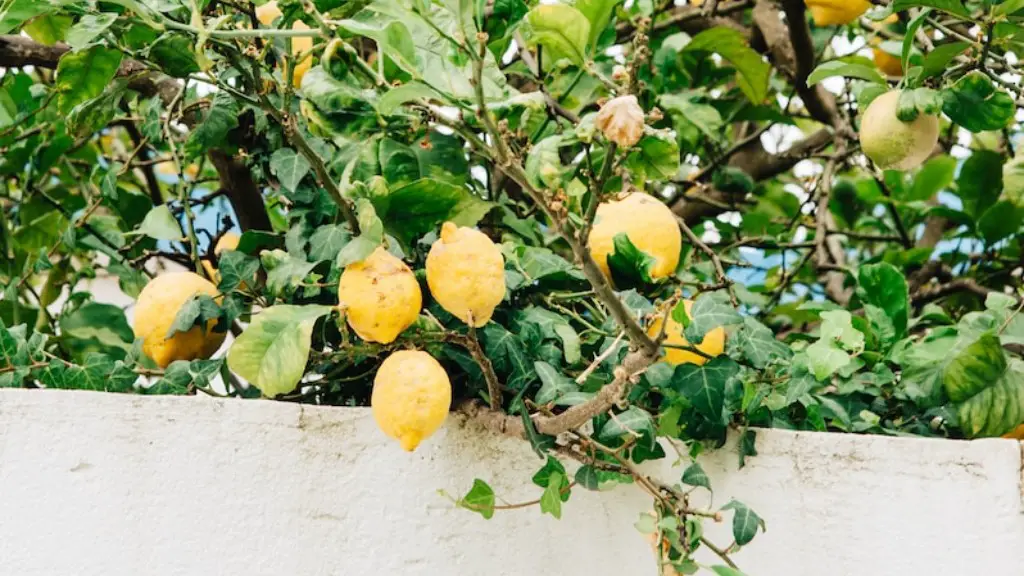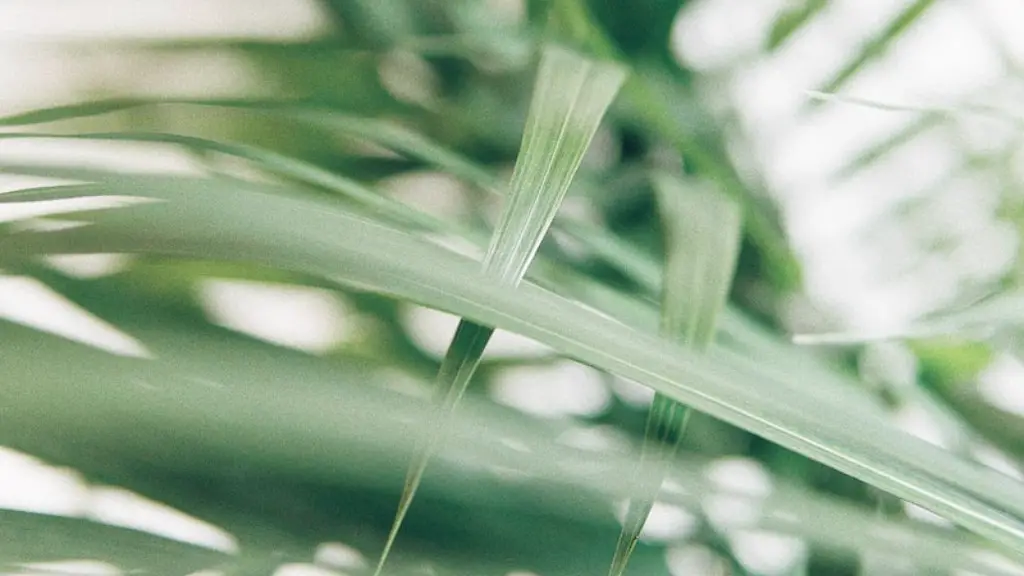Lemon trees can be an attractive addition to the garden, but for gardeners looking to capitalize on their harvest, encouraging the tree to produce fruit must be a priority. Many gardeners have found success in promoting lemon tree production, and there are some key steps to consider.
To start, lemon trees require a wide range of soil conditions. The soil must be well-drained, acidic, and rich in organics such as composted manure. Even when conditions are optimal, the soil should be monitored monthly and the pH level should be adjusted if necessary. Adding mulch around the tree helps retain moisture and discourage weeds.
Additionally, pruning is paramount in encouraging fruit production. Gardeners should prune the lemon tree throughout the season to encourage a healthy shape and remove dead or diseased branches. Pruning will also increase the amount of sunshine and air available to the flowers and fruit, which is an integral part of the process.
Fertilizing is also necessary for lemon trees, and this should be done once a month with an appropriate citrus fertilizer. The fertilizer should be applied evenly around the tree and into the root area, making sure to distribute it evenly. Gardeners should avoid over-fertilizing, as this can impact the plant’s health.
Lemon trees are sensitive to water, but they do need to be watered regularly. The amount of water needed will depend on the tree’s size, how often it is watered, and the climate. The tree should be watered deeply at least once a week, but gardeners should also monitor the soil’s moisture content and adjust their watering as necessary.
Lemon trees need sunny conditions to bear fruit. The tree should be planted in an area that receives 6-7 hours of direct sunlight each day. Additionally, trees should be protected from wind and extreme temperatures. Insulating the soil and providing shade during hot days can help maintain the tree’s health.
Placing lemon trees in a slightly elevated area also helps drain out excess moisture and can boost fruit production. The bed should be raised 6 to 10 inches and the soil should be sloping towards the bottom of the bed to promote drainage.
Monitor Nutrient Levels
To encourage fruit production, the tree’s soil must contain adequate amounts of nitrogen and potassium. A soil test will reveal the soil’s nutrient content and it should be repeated every few years to ensure it contains the necessary levels. If the soil is deficient in nitrogen or potassium, the gardener should supplement it with a suitable fertilizer.
Maintaining an average soil moisture level is also essential for encouraging fruit production. The tree should not remain soggy or dry for too long, as either can stunt its growth or cause the fruit to drop prematurely. Monitoring the drainage level of the soil is key to keeping its moisture level in check.
Gardeners should also take steps to limit the effects of pests on their lemon tree. Common pests like aphids, spider mites, and white flies can be controlled with insecticidal soaps and horticultural oils. Additionally, gardeners should use organic mulch around the tree to discourage these pests from settling in its branches. Finally, attracting beneficial insects like ladybugs, lacewings, and predatory wasps can help to naturally control pests.
Provide an Adequate Pollinator
In order for the lemon tree to produce fruit, adequate pollination is needed. Pollination helps transfer pollen from the tree’s flowers to encourage fruit production. Bees are excellent pollinators and can be attracted to the garden by planting flowers such as daisies, dandelions, and clover near the tree. Ensure the flowers are in bloom when the lemon tree is producing its flowers.
Gardeners should also consider hand-pollinating their lemon tree if it does not produce adequate flowers or has difficulty attracting pollinators. This involves using a small paintbrush and transferring some of the pollen from the anthers to the stigma of the flowers. This process should be repeated every two days and it should cover all of the flowers on the tree.
Applying lemon tree fertilizer one or two times a year can also help boost fruit production. The fertilizer should be tailored to the tree’s specific nutrient needs and should be applied to the soil between the tree’s root system and the trunk. The fertilizer should be reapplied after harvesting, to provide the tree with all the nutrients and minerals that it needs.
Harvest the Lemons Regularly
To encourage the lemon tree to keep producing fruit, gardeners should aim to harvest the lemons regularly. This will encourage the tree to keep producing more lemons, as it does not want to waste energy. Gardeners should also avoid harvesting too much fruit at one time, as this may stress the tree.
When harvesting, gardeners should make sure to use pruning shears and not pull the fruit off the stems. The cut should be clean and even, and gardeners should ensure there is no damage to the fruit or stems. Additionally, the fruit should be allowed to ripen on the tree and should only be harvested when it is ready to be eaten.
Finally, gardeners should treat the lemon tree with care and respect by avoiding contact with the stems and leaves. Any contact with the tree should be kept to a minimum and the tree should be monitored regularly to ensure it is healthy and pest-free.
Encourage Soil Fungi
Encouraging beneficial soil fungi can also help promote fruit production in lemon trees. Beneficial fungi form a beneficial relationship with the tree’s roots, which helps to increase the nutrient and water uptake. They can be encouraged in the garden by adding compost and manure to the soil, as well as using organic fertilizers.
To further encourage beneficial fungi, gardeners should avoid using fungicides and chemical fertilizers on their lemon tree. These chemicals can damage the beneficial fungal population and can make the soil uninhabitable for the beneficial fungi. Gardeners should also avoid any practices that can disrupt the beneficial fungal colonies, such as tilling and digging deep into the soil.
Finally, gardeners should make sure their lemon tree is not overwatered. Overwatering can lead to anaerobic conditions, which can damage the beneficial fungus. Furthermore, overwatering can also lead to nutrient deficiencies, root rot, and fungal disease. Instead, water the tree deeply and evenly, providing enough moisture for the lemon tree but not so much that it becomes waterlogged.
Choose the Right Variety
When choosing a lemon tree, gardeners should pick a variety suited to their climate. Lemons come in a variety of sizes and shapes, and some are more suited to certain regions than others. For example, Eureka lemons are known for their cold-tolerance and can be grown in colder climates. Gardeners should take these factors into consideration when selecting a variety.
Gardeners should also make sure the tree is healthy and free of pests before planting. Inadequate care and disease can reduce the tree’s vigor and its fruit production. Upon selecting the perfect lemon tree, gardeners should ensure that the root system is intact, that the leaves are healthy, and that the tree is well-watered.
Finally, gardeners should plant the lemon tree in an area that receives plenty of sunlight and is sheltered from harsh winds. Once the tree is planted, gardeners should cover the roots with a layer of mulch to retain moisture and discourage weeds. With the correct variety and adequate care, gardeners can expect to enjoy a bountiful harvest of lemons each year.



